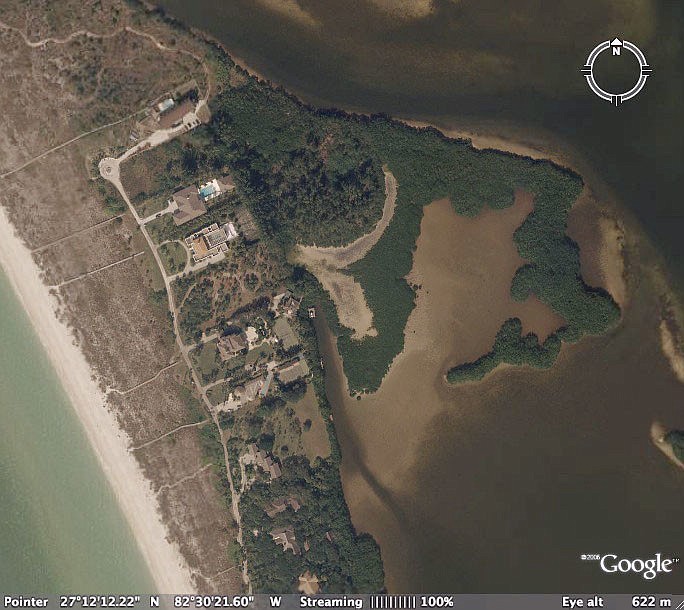- April 18, 2024
-
-
Loading

Loading

A plan to return the park at the northern end of Casey Key to its native wetlands habitat is set to begin.
County commissioners approved May 10 a $559,650 contract with an environmental-restoration company to improve Palmer Point Park, which is currently overrun with invasive species, such as the Australian pine.
Water quality and wetlands restoration are the project’s main goals.
It used to be a wetlands, but the placement of dredge spoil in the area destroyed that natural habitat.
The project will restore two acres of Palmer Point Park by removing invasive, exotic and nuisance trees and plants, re-grading the land by taking out excess dredged material and re-plant native coastal vegetation, such as mangroves and marsh grass, as well as live oaks and sabal palms.
“We’ll return it to being a coastal wetland,” said project manager Curtis Smith.
The park is strictly a natural habitat, with no facilities for people.
Re-grading of the property will take it below the mean high-water line, which will result in it being entirely covered by the tide at times.
The project, which is funded through a combination of sales-tax money and grants, could have cost about $100,000 less if Casey Key residents had approved the use of their road for the construction vehicles.
Smith met with a group of residents three years ago to ask their permission to use North Casey Key Road for the removal of the vegetation and spoil from Palmer Point Park.
The contractor would have trucked in heavy equipment, including dump trucks and front-end loaders at the beginning of the project. The non-native plants and trees would have been cut down and mulched on site. Workers would then have burned the mulch there, but if that weren’t feasible, the mulch would have been hauled out of the area.
The neighbors objected, saying the road was too narrow for the trucks. They were also concerned that canopy trees could be damaged.
The county wanted to be sensitive to those concerns, so it came up with a plan to access the site by boat and remove the debris on a barge.
“Yes, it’s more expensive to do it from the water, but it gives more flexibility to the contractor to find a location to stage (equipment),” said Smith.
Construction is set to begin this month and will wrap up in September.
Contact Robin Roy at [email protected].